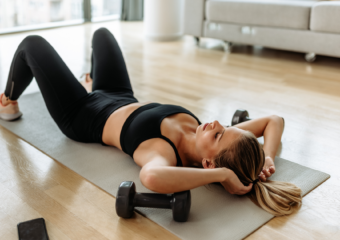Exercise is a powerful tool that contributes to every aspect of well-being. By incorporating a variety of workouts, understanding intensity levels, and staying consistent, you can achieve your fitness** Practices**
🌟 Introduction
Exercise is the cornerstone of a healthy lifestyle. It not only boosts physical strength and endurance but also supports mental well-being, improves energy levels, and reduces the risk of chronic diseases. In this comprehensive guide, you’ll learn about the different types of exercise, their unique benefits, how to design an effective workout plan, and essential tips for maintaining consistency.
Whether you are a beginner or a seasoned fitness enthusiast, this blog provides valuable insights, interactive content, and engaging charts to help you stay motivated on your fitness journey.
🏋️ Why Exercise is Essential
Physical Benefits
- Increases cardiovascular health and lung capacity
- Builds and tones muscles
- Improves flexibility and balance
- Aids in weight management and fat loss
Mental & Emotional Benefits
- Reduces stress, anxiety, and depression
- Enhances mood by releasing endorphins
- Boosts brain health and memory
- Improves sleep quality
Long-term Health Benefits
- Reduces the risk of heart disease, diabetes, and stroke
- Strengthens bones, lowering the risk of osteoporosis
- Enhances immune function
- Promotes longevity
Types of Exercise and Their Benefits
| Exercise Type | Key Benefits | Example Workouts |
|---|---|---|
| Cardiovascular (Aerobic) | Improves heart health, burns calories, boosts endurance | Running, Cycling, Swimming |
| Strength Training | Builds muscle, strengthens bones, boosts metabolism | Weightlifting, Bodyweight Exercises |
| Flexibility | Improves range of motion, prevents injuries | Yoga, Dynamic Stretching, Pilates |
| Balance & Coordination | Enhances stability, reduces fall risk | Balance Board, Tai Chi |
🏃 Designing an Effective Workout Plan
A well-rounded exercise routine includes all types of workouts. Here’s how you can structure a balanced plan:
| Day | Workout Type | Duration |
|---|---|---|
| Monday | Strength Training (Upper Body) | 45 minutes |
| Tuesday | Cardio (Running/Cycling) | 30 minutes |
| Wednesday | Flexibility & Mobility | 20 minutes |
| Thursday | Strength Training (Lower Body) | 45 minutes |
| Friday | HIIT Cardio | 30 minutes |
| Saturday | Yoga & Meditation | 30 minutes |
| Sunday | Rest or Light Walking | — |
Exercise Intensity Levels
| Intensity Level | Description | Heart Rate (% Max) | Example Activities |
|---|---|---|---|
| Low | Comfortable, easy breathing | 50-60% | Walking, Yoga |
| Moderate | Breathing faster, slight sweat | 60-70% | Jogging, Swimming |
| High | Deep, rapid breathing | 70-85% | Running, HIIT Workouts |
| Maximum | Very hard, can’t maintain long | 85-100% | Sprinting, Competitive Sports |
🏆 Top Tips for Staying Consistent with Exercise
- ✅ Set Realistic Goals: Define achievable milestones.
- ✅ Track Progress: Use fitness apps to monitor improvements.
- ✅ Find an Exercise Buddy: Accountability boosts motivation.
- ✅ Mix Up Workouts: Try different activities to avoid boredom.
- ✅ Reward Yourself: Celebrate small victories along the way.
🌟 Additional Insights
Staying motivated in the long term requires understanding your personal fitness journey. Identify what drives you—whether it’s weight loss, muscle gain, or simply feeling energetic. Setting short-term goals keeps you engaged and builds confidence as you achieve them. Consider documenting your progress through photos or journals to visualize how far you’ve come.
Additionally, nutrition plays a crucial role in supporting an active lifestyle. Balanced meals rich in protein, complex carbohydrates, and healthy fats enhance performance and recovery. Hydration is equally important, so ensure you drink plenty of water, especially during and after workouts.
Finally, rest and recovery days are not just breaks; they are essential periods where your body heals and grows stronger. Adequate sleep, stretching, and light activities like yoga can help your muscles recover, reducing the risk of injuries and burnout.
FAQ Section
For beginners, low-impact cardio such as walking or cycling combined with basic strength training is ideal. Flexibility exercises like yoga can also enhance mobility and reduce injury risk.
Health experts recommend at least 150 minutes of moderate aerobic exercise or 75 minutes of vigorous activity weekly, along with two days of strength training.
Warm-up before workouts, maintain proper form, use appropriate equipment, and listen to your body. Rest and recovery days are also crucial for preventing overuse injuries.
🌟 Final Thoughts
Exercise is a powerful tool that contributes to every aspect of well-being. By incorporating a variety of workouts, understanding intensity levels, and staying consistent, you can achieve your fitness goals and enjoy a healthier, happier life. Start today, stay committed, and let exercise transform your body and mind. 💪✨








Recent Comments